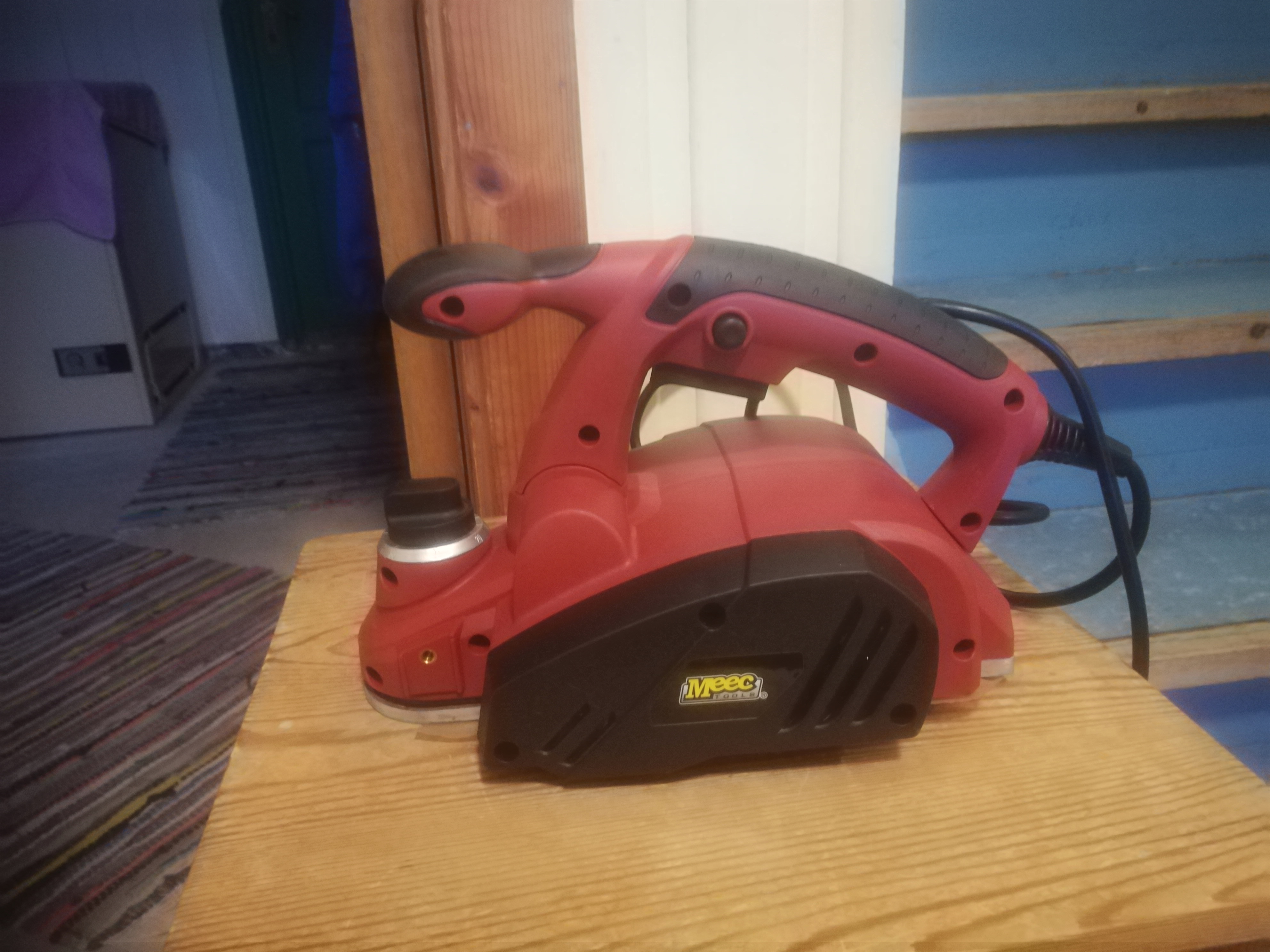A plane is a tool for shaping and smoothing wood. In the pre-industrial period hand planes were used to flatten, reduce the thickness of, and dress (smooth) rough lumber. Most of this work is now done by electric planers (aka thicknessers). Special types of planes were also used to cut joints or mouldings. A typical example is the rabbet plane. Today, a router or shaper is used for this work, although – increasingly – specialized tools are used.
In a workshop, the most important use of a plane was to integrate surfaces on workpieces. It is here that the electric plane has taken over, although it is unsuited for many delicate jobs that must still be entrusted a manual plane.
An electric plane is a portable machine that uses rotating knives to smooth a surface. The main reason for using an electric plane is to save time, “In 1918 an air-powered handheld planing tool was developed to reduce shipbuilding labor during World War I. The air-driven cutter spun at 8000 to 15000 rpm and allowed one man to do the planing work of up to fifteen men who used manual tools.” https://en.wikipedia.org/wiki/Plane_(tool) referencing Planing Ship Timbers with Little Machines, Popular Science monthly, December 1918, page 68, Scanned by Google Books: https://books.google.com/books?id=EikDAAAAMBAJ&pg=PA68

Yesterday, was the first time that I have used an electric plane. It is considerably heavier than the manual jack plane that I am used to. While not absolutely necessary, its operation feels better using two hands. It was used to trim MDF board so the same dimensions as the frame underneath. This is not a task that I would even contemplate with a manual plane. One could argue that an electric plane is not essential for this task. An alternative approach would be to use a router with a flush trimming bit. The challenge, in Norway, is that it is impossible to get 50 mm bits. So, in reality there is no alternative to an electric plane.
At the moment I have not had to sharpen the plane knives, although using them on MDF will require them to be sharpened soon.
I have no complaints with the Meec plane. It is solidly built but heavy, weighing 3 kg, despite an aluminum base plate. It offers 900 W of power, with a knife width of 82 mm, allowing it to cut from 0 to 2.5 mm in depth. It operating speed is 16 000 rpm. Unlike many other electric planes, this uses 3 double-edged knives. This means that the knives are reversible. The plane is equipped with a dust port that can be connected to the shop dust extraction system. It came with a parallel guide and a depth guide, as well as a dust bag and an extra drive belt. It cost NOK 600 (USD 78).
In comparison, a Bosch PHO 2000 electric plane has 680 W of power, the same knife width (82 mm), but a maximum cutting depth of 2.0 mm. It weighs 2.4 kg. The Bosch operates at a higher speed, 19 500 rpm. It provides only 2 knives, but they are easier to remove. At NOK 1 200, it costs twice the price of the Meec.

